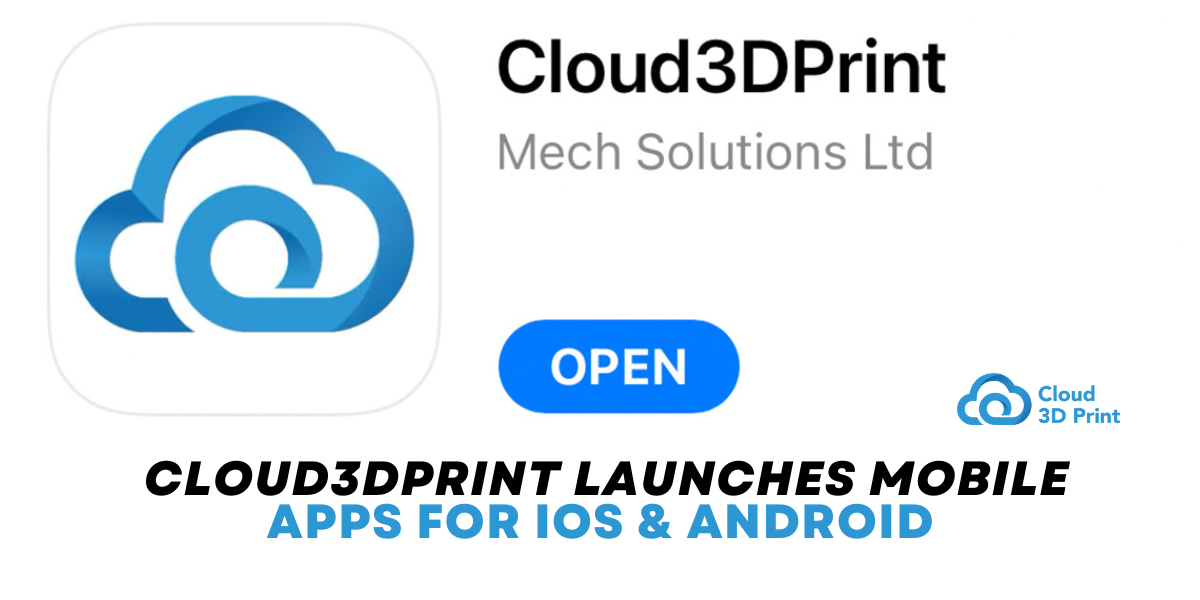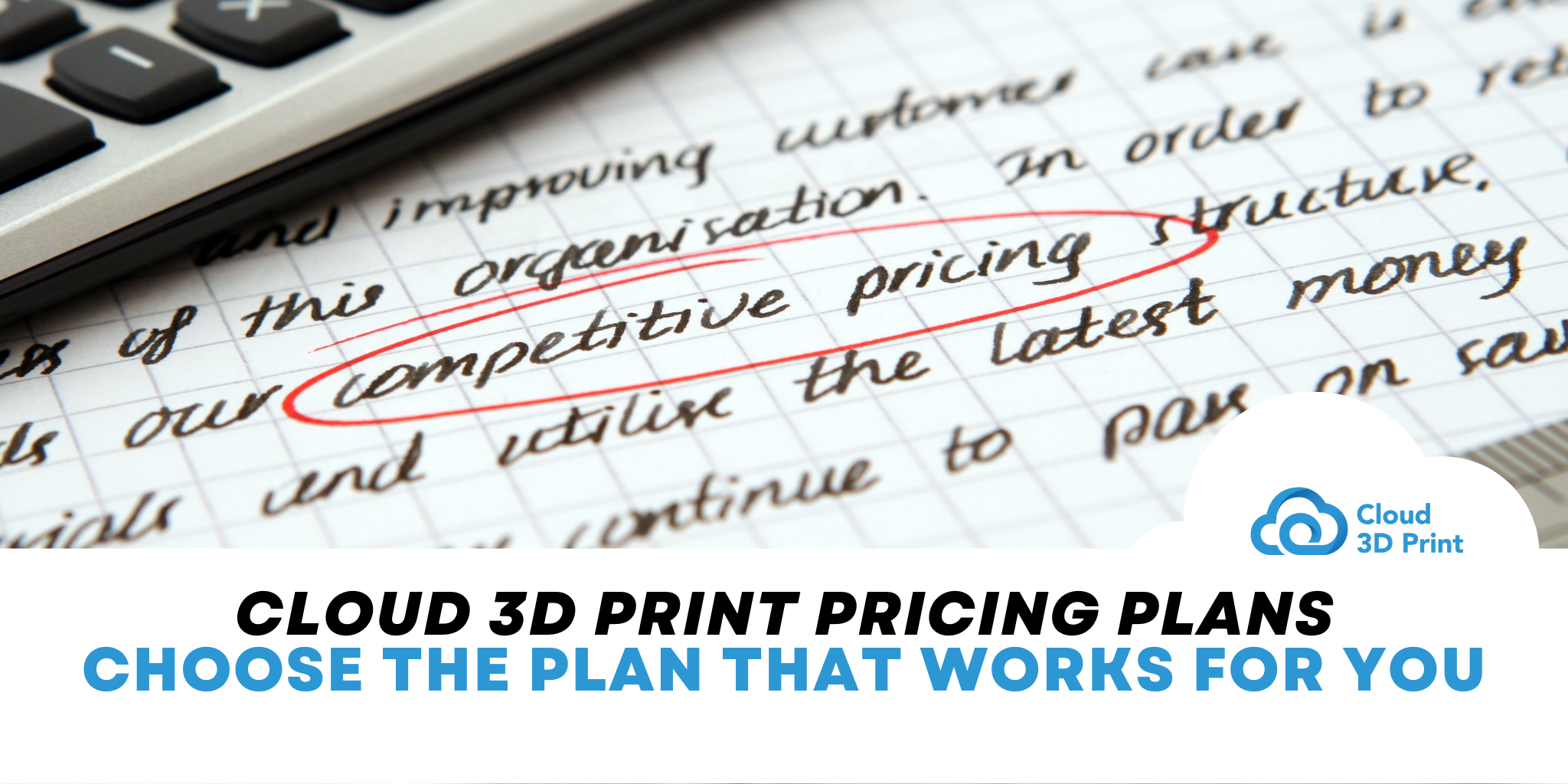Cloud 3D Print is a top-of-the-line innovative software developed by Mech Solutions Ltd. The software is aimed at greatly facilitating and simplifying 3D printing by shifting the 3D printing space to a cloud-based environment. Presently Cloud 3D Print is compatible with Fuel Deposition Modelling (FDM) 3D printers but this is going to change as work is in the pipeline to integrate Cloud 3D Print with the DLP (Digital Light Processing), SLA (Stereolithography) and SLS (Selective Laser Sintering) 3D printers.

An overview of the issues that our team noticed
The whole idea of developing software like Cloud 3d Print was introduced after our team of professionals noticed key issues that 3D printing faced in the industry. With over 3 years of experience in the industry, our team realized that there were core areas in which work was required to improve and manage 3D printing activities.
For a starter, it was observed that the integration and compatibility of 3D printers with associated software was a big issue. Many 3D printers offered limited compatibility with the software that was easily available. Likewise, there were many efficient slicing software that offered limited compatibility with a lot of 3D printers.
Another main concern was that there was no way to remotely overlook 3D printing ventures. Slicing models always require that the user must visit a workstation where slicing software is installed. If users are travelling or not in the vicinity of such a workstation, then they’ll have to wait until they can access the workstation. After slicing, users must either purchase a 3D printer themselves or find someone who owns one. Users must then go to the place where the actual 3D printer is located and then proceed to print the model. Even after that, they must remain in the proximity of the 3D printer so they can troubleshoot in case of any issue. These restrictions greatly limit anyone’s 3D printing ventures.
Lastly, if users want to move a level up from just being a hobbyist and want to take 3D printing as a career and business venture, then they must take care of a host of other factors that no software or artificial intelligence platform can cover. For example, the most important aspect for users would be customer dealing. When one gets multiple orders then prioritizing particular orders becomes important. One also has to develop a framework that controls which tasks take precedence and which take the back seat.
As a user, you must consider this. When catering to multiple orders, what will you do first? Will you first slice all the models? Or will you complete one order before moving to the next one? What if slicing presents problems? What if you start getting failed prints while getting close to deadlines with some models still left to slice? What if you have no idea about the quantity of material required for a particular project? You might buy more and waste money or you might buy less and end up running to buy more material in the middle of a project.
Questions like these need to be addressed so that you don’t create problems in your business management.

What Cloud 3d Print brings to the table
Since Cloud 3d Print was solely developed to deal with the issues mentioned above, we can take a look at how the software provides a working solution for each of these issues.
The issue of integration and interoperability between platforms has been addressed by the software because it has been made compatible with over 150 of the most widely used 3D printers at the moment. It took a great deal of effort to make all those 3D printers compatible with Cloud 3d Print but this has ensured that whichever 3D printer is required to print a model, Cloud 3d Print can work with that printer.
The issue of the need that a 3D printer should always be in your access has been settled by moving the workspace to an online cloud platform. Not only users can access the desired 3D printer while sitting in their homes, but they can also monitor and control the printing process with their laptop or smartphone. In addition, slicing files no longer require that the user reaches out for a workstation, turns it on, opens the slicing software and then waits for the slicing process to complete. All of this too can be done with laptops and smartphones. Another key aspect of the software is online storage. Users can store files (.stl, .obj), g-codes, videos and pictures on the online cloud storage. This allows universal access to important files, anywhere, anytime. Furthermore, all the data is protected against hacking and theft with the help of robust security protocols. The software essentially acts as an online ‘locker’ for data where only authorized users can access files. This also eliminates the need to store files on a hard drive because hard drives cannot be accessed whenever and where ever.
Cloud 3D Print also facilitates users who want to make 3D printing as a commercial activity. The software comes forth as a multi-faceted platform that covers all the aspects that are required for smooth business handling and customer dealing. The software allows users to handle multiple projects (or multiple customers) at a time. It enables users to prioritize projects by giving a complete picture of the type/amount of material required and the estimated time to complete each project. This enables users to save overhead costs from the material side. After completion of orders, Cloud 3D Print can generate the complete business documentation that proves instrumental in dealing with customers.
Lastly, Cloud 3D Print enables users to organize their 3D printing activities and greatly reduces unpredictability in their operations. When the entire process is organized and technically sound, the user is confident that he will get a successful print ten out of ten times. The process has no turbulence in it and that drastically reduces failure rates and high print quality is achieved consistently.



